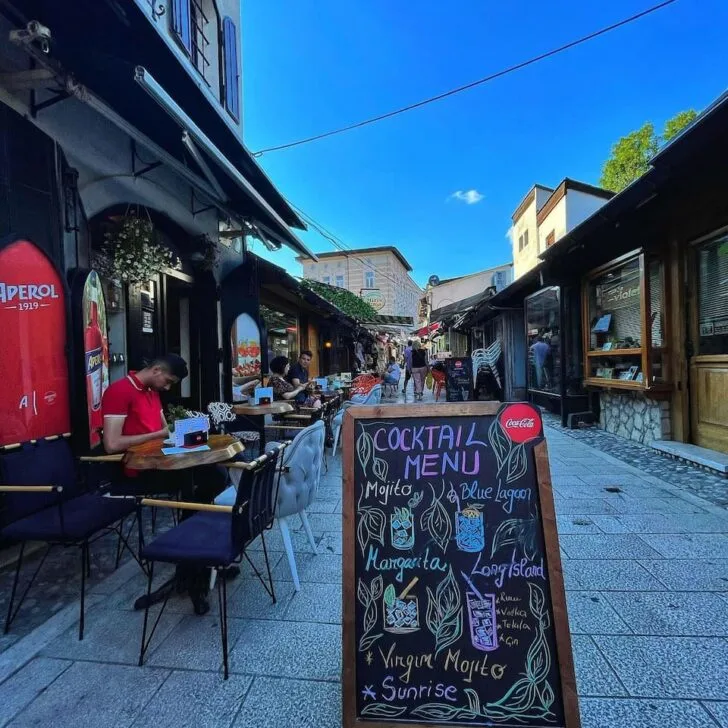We may receive a commission if you make purchases through affiliate links (at no extra cost to you). Read why our approach to travel is different.
Sandwiched between Estonia and Lithuania, Latvia is perfectly positioned for exploring on an overland Baltic adventure. First settled in the 2nd millennia BC, the country of Latvia was born out of war in November 1918 ending a near 200-year period of Russian rule. This independence wasn’t to last.
Just 22 years later, with war sweeping across Europe once more, Latvia was incorporated into the Soviet Union. It wasn’t until 1990 that Latvia became independent again. To this day, Russia’s mark on Latvia is abundantly clear.

Just like its Baltic neighbors, Latvian cuisine was traditionally heavily influenced by Russia. Add in the hangover from Latvia’s time under German and Polish rule, you’ll find hints of the continent throughout Latvian traditional food.
With that, here are 8 must-eat dishes every visitor to Latvia should try.
Skip to...
Why Visit Latvia
Aside from the chance to sample Latvian traditional food, Latvia’s biggest draw is its historic capital. The former Hanseatic port city of Riga has all the ingredients for the ultimate European city break. Built up on the banks of the Daugava, long before the city of Riga came into being, its port was a vital link between Scandinavia and the Byzantine Empire.
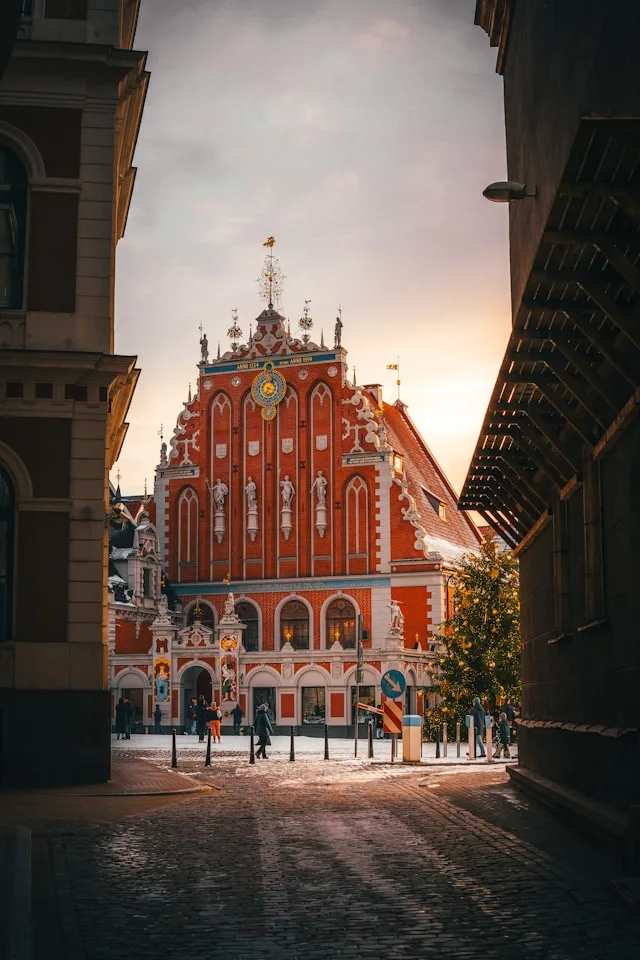
Its medieval old town draws over a million tourists every year. It isn’t hard to see why. Make sure you allow time for a walking tour to get to grips with its eight centuries of history. Pass your evenings in Riga cruising down the Daugava, dining at its best restaurants and sampling its surprisingly lively nightlife.
Outside the capital, take a coastal road trip to Cape Kolka. From here, you’ll enjoy a stunning panorama across the Baltic to the Estonian islands, Danish Visby and the Swedish coast in the distance. Head to the beachfront city of Liepaja to study Latvian wartime history at Liepaja Museum. Nearby Skede Dunes Holocaust Memorial is a moving tribute to the 3000 Jews executed on the site in the winter of 1941/42.

If you’re basing yourself in Riga during your time in Latvia, take a day trip to Sigulda and Turaida. Sigulda Castle Complex is a wonderful collection of historic buildings. At its center, a 13th century Livonian Order castle. At Turaida, the medieval castle’s granary has been transformed into a museum of Livonian history.
The Best Latvian Traditional Food: 8 Must-Eat Dishes
1. Auksta Zupa
Cold soup is by no means a Baltic concept, but auksta zupa has been a Latvian traditional food since long before Spanish gazpacho was a worldwide favorite. This Latvian delicacy is not dissimilar to borscht, albeit a cold version.
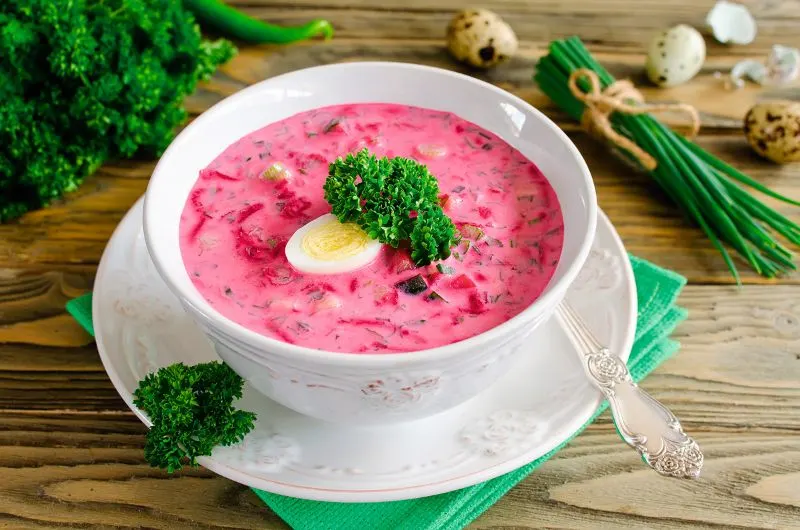
Developed from a humble farmers’ soup, auksta zupa is made from a kefir (sour milk) base. Boiled beets, cucumbers and radishes are added. It’s served with half a cold boiled egg along with a parsley garnish. Some recipes call for the addition of spices to give it a little bit of a kick.
As a minimum, auksta zupa must be chilled for at least two hours before serving. This cooling process enhances the flavor, making for a light, refreshing and flavorful soup.
Auksta Gala
The word auksta means cold and it’s a phrase you’ll likely come across more than once whilst working your way through the best Latvian traditional food. Auksta gala is cold meat, usually served in jelly. Most commonly, offcuts of pork which wouldn’t normally be eaten as used to make it. Head and ear meat is typically used.
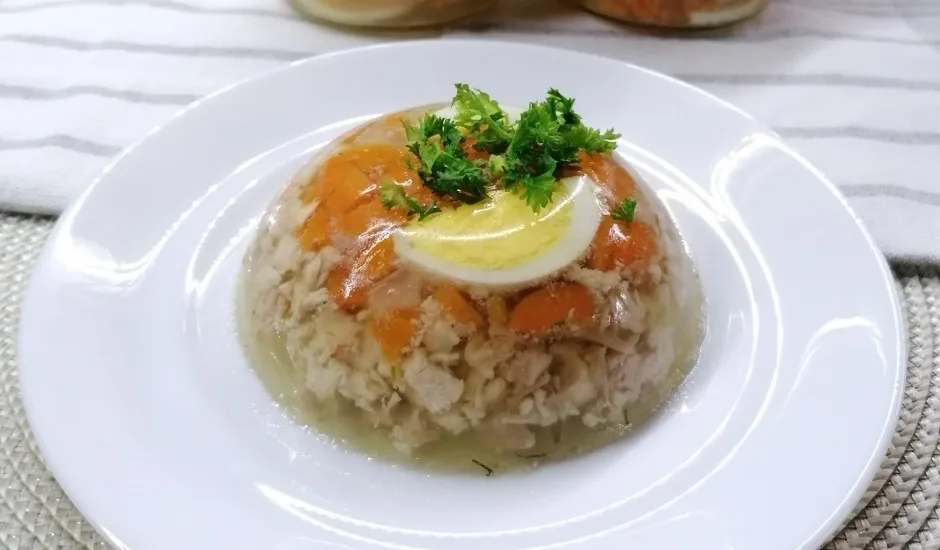
2. Rye Bread
The perfect accompaniment for the first Latvian traditional food on our list, rye bread is a Baltic staple. Just as popular in Lithuania and Estonia, the bread is far denser and darker than traditional wheat bread.
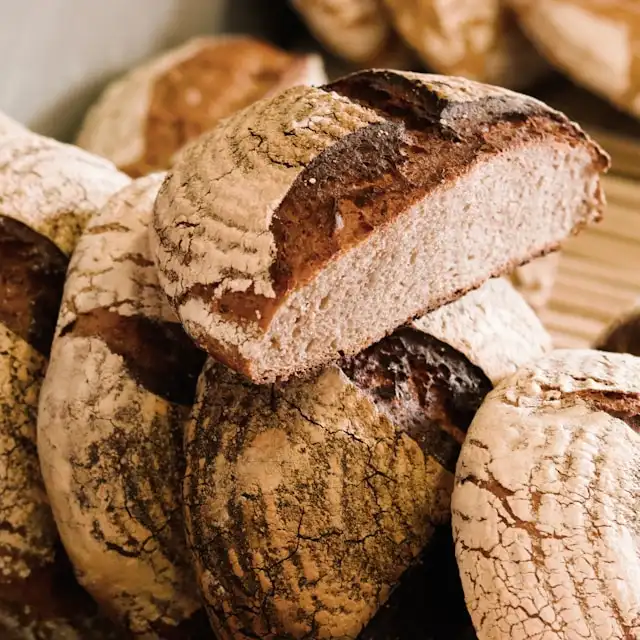
Dating back to the medieval period, when rye flour was far cheaper than wheat, rye bread is one of those dishes you’ll come across time and time again in Latvia. Served as an accompaniment to soup and main dishes, used for sandwiches or eaten on its own, rye is the most popular type of bread across the Baltic states.
Latvian Ambrosia
Rye bread doesn’t only accompany other dishes, it can be a delicacy in itself. A Latvian traditional food especially popular in the festive period is Latvian ambrosia. You’ll sometimes see it referred to as layered rye bread or rye bread trifle.
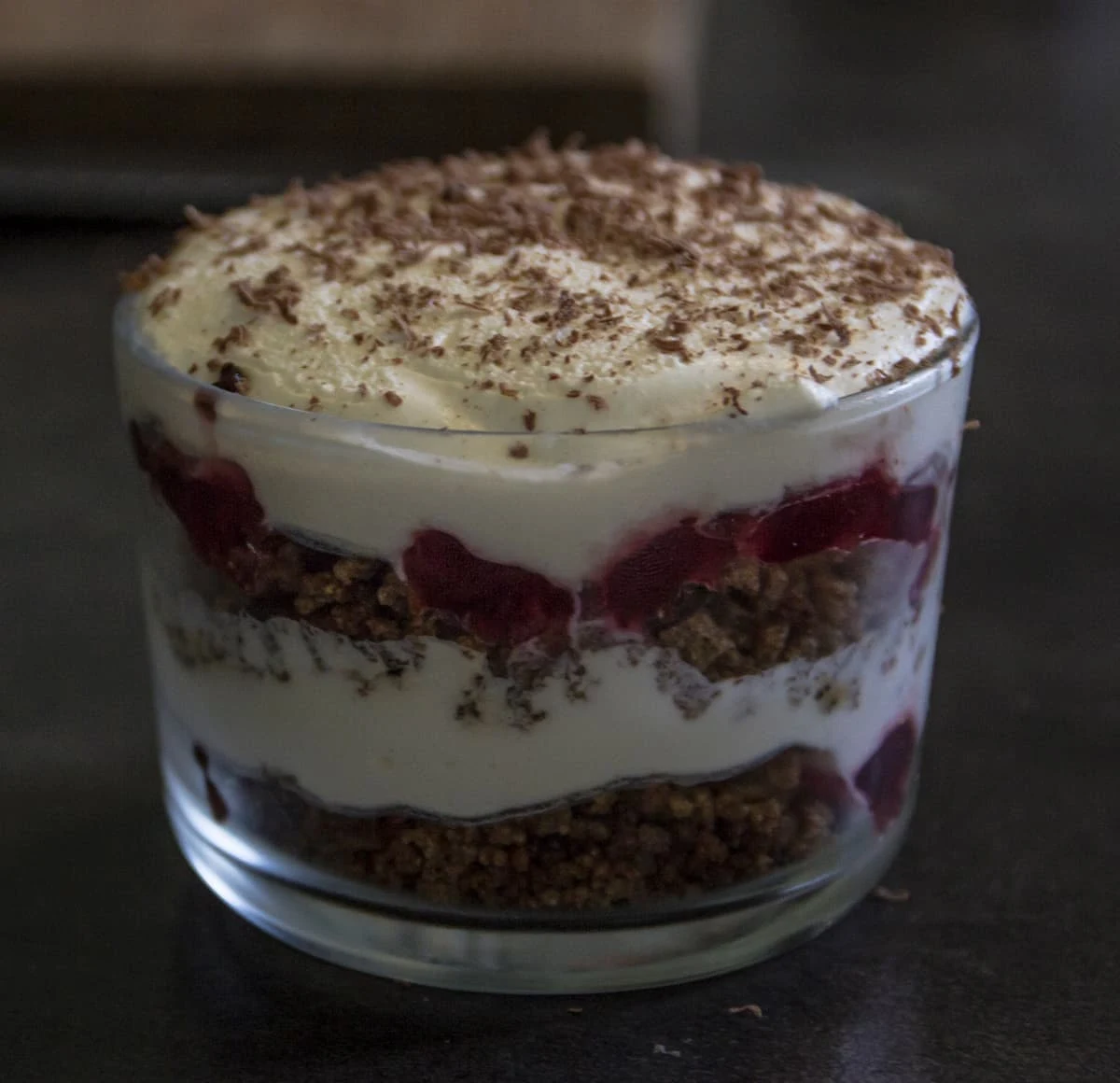
Latvian ambrosia will surprise you. Served in a clear glass just like classic fruit or chocolate trifle, the layers consist of rye breadcrumbs, whipped cream and blackcurrant jam. Mascarpone cheese is sometimes used in place of cream, giving you a trifle-cheesecake hybrid.
You may well think that the concept of rye bread being used in a dessert sounds a tad unusual. I’d be inclined to agree. But once you’ve tasted this Latvian traditional food highlight, you’ll understand why it takes its name from the food of Gods.
3. Spekrausi
These crescent-shaped pastries are my all time favorite Latvian snack. Often considered one of the country’s national dishes, spekrausi are the ultimate Latvian traditional food. There are so many variations of the recipe, you could easily try several spekrausi without realising they’re the same dish. The good news is that almost every bakery sells them, so you’ll be able to try plenty.
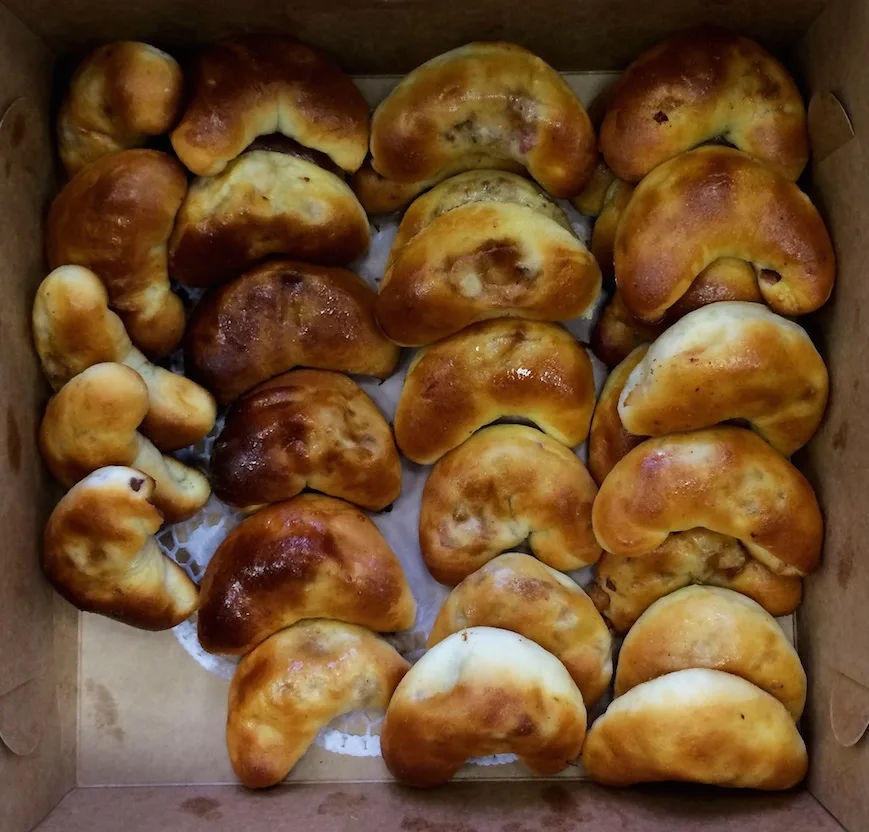
However you try them, these are Latvia’s very own version of sausage rolls. The centre of the pastry is stuffed with tiny cubes of fatty bacon and onions. In fact, maybe likening them to sausage rolls is an injustice. Spekrausi are in a league of their own.
These days, a plethora of other fillings are available too. Ground beef, chicken and fish are popular. Vegan and vegetarian-friendly alternatives include sauerkraut and stewed cabbage.
4. Kotletes
These round meat patties are my absolute favorite Latvian traditional food. They’re simple, but cooked well, they’re divine. Imagine a cross between a meatball and a hamburger patty, and kotletes is what you’re thinking of.
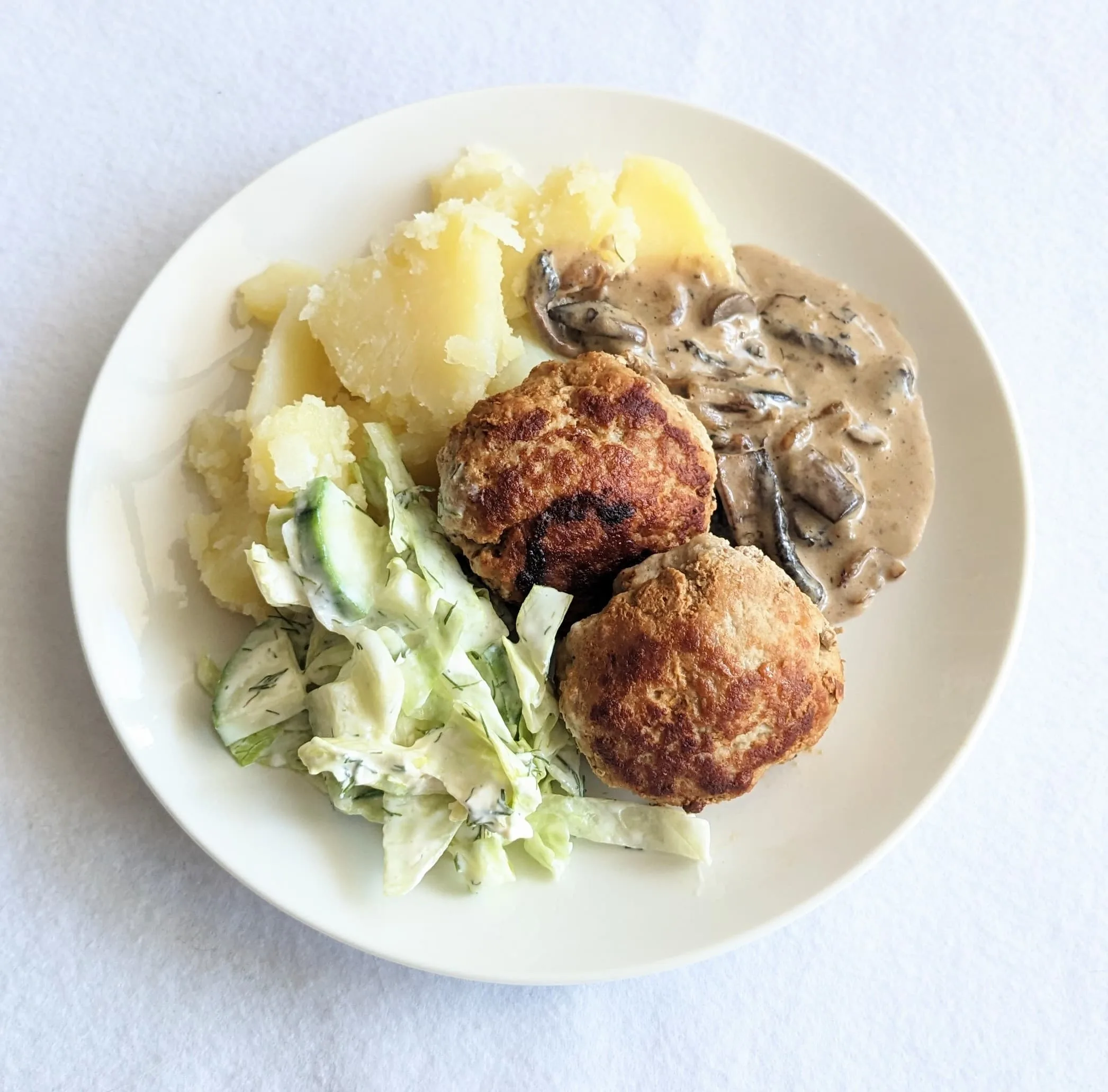
A lunchtime go-to for many across Latvia, whilst kotletes tend to contain the same ingredients all over the country, every recipe is slightly different. Handed down from generation to generation, homemade kotletes are a matter of pride for Latvian cooks. If you’re served them in a family home, just remember: these are the best kotletes you’ve ever tasted.
The base recipe for the perfect patty starts with ground meat (pork is most traditional, but beef and chicken can be used too). The meat, still raw, is mixed with chopped onions and garlic, then divided into patties. Next comes the kneading stage. Latvians will tell you that mastering this stage is the key to success.
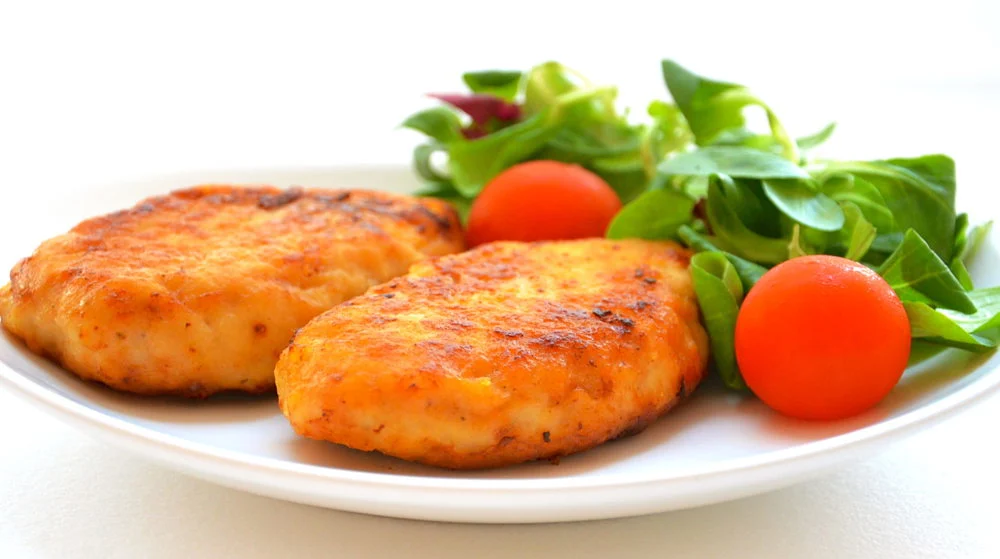
Once they’re kneaded, the kotletes are fried and it’s time to tuck in. Typically, you’ll find the patties served with boiled potatoes, doused in a rich and creamy mushroom sauce.
5. Pelekie Zirni ar Speki
Another Latvian traditional food often considered one of the national dishes, pelekie zirni ar speki is a pea stew like no other. It’s the peas themselves which make all the difference. Forgot frozen store-bought garden peas, even petit pois aren’t good enough. Pelekie zirni ar speki uses Latvian grey peas.

Gray peas, the peleki zirni element of this Latvian traditional food, have long been a Baltic staple. Before the introduction of potatoes, they formed the base of almost every meal for local peasants. If you’re wondering what the ar speki part of name means, it’s not what you’re expecting. Ar speki means “with strength”.
This strength comes from bacon and onions. The onions are fried along with bacon, or occasionally other dry cured meats, combined with the peas and served up as one delicious, filling stew.
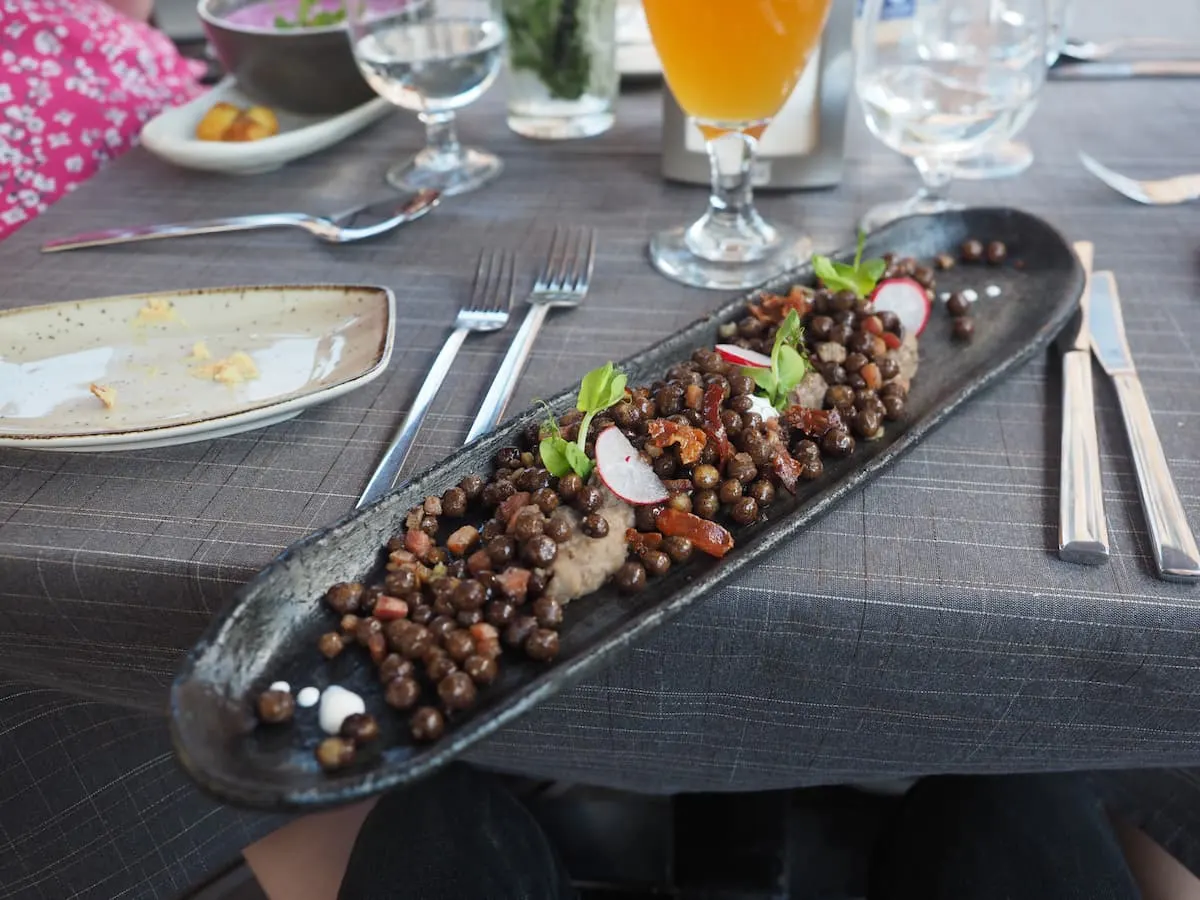
6. Herring
If you’ve made it to Latvia, the chances are this isn’t your first stop in Northern Europe. If so, this won’t be your first encounter with herring. On the off chance that you’ve passed it by so far, there’s never a better time to become acquainted with this versatile, salty fish. Herring is more than a Latvian traditional food, it’s a European love affair.
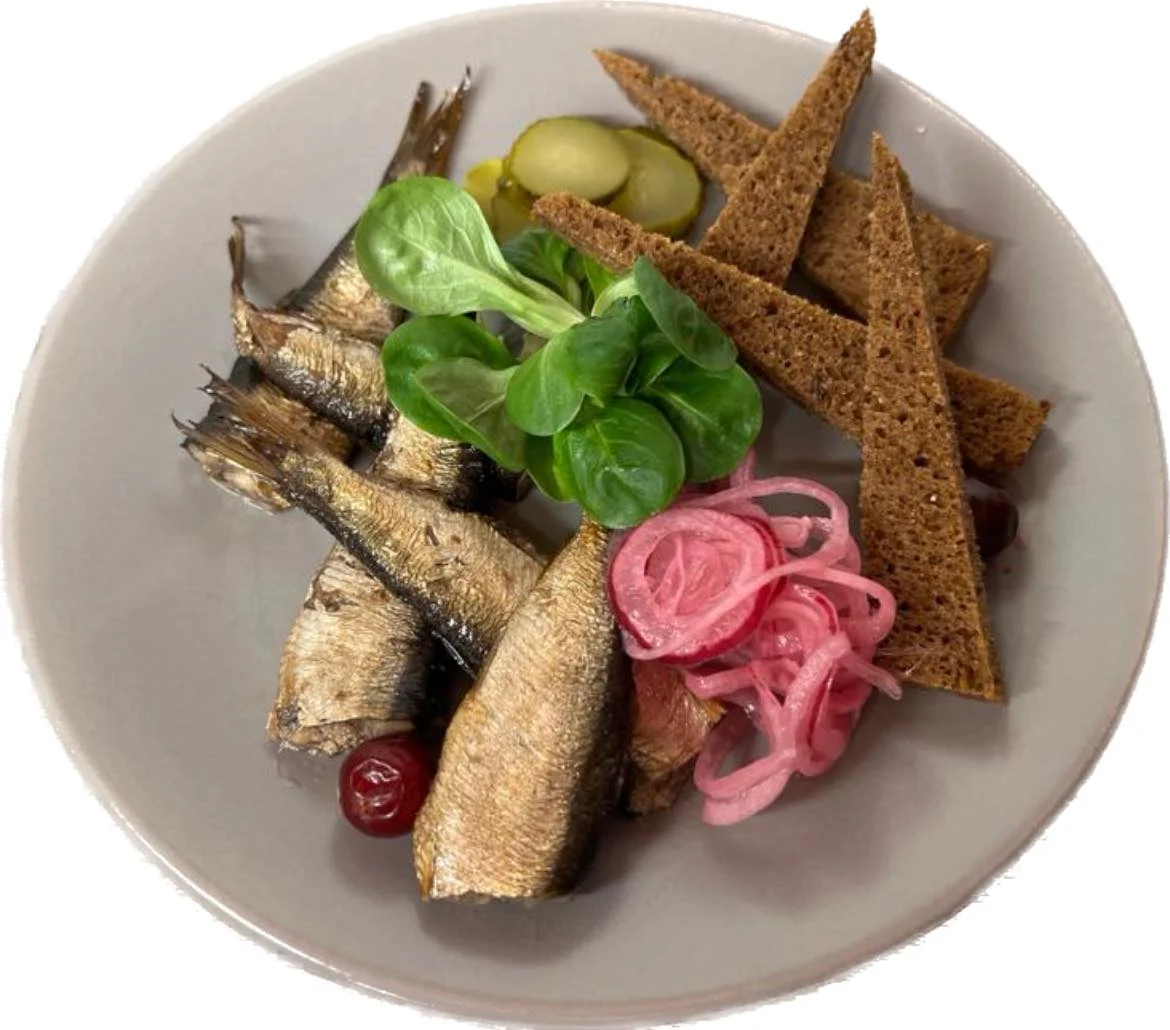
From the food stalls of Amsterdam to Riga’s top restaurants, Herring, in its many forms, is just waiting to touch your lips. Sometimes referred to as sprats in Latvia and the neighboring Baltic states, herring are a small pelagic fish which are found in every corner of the North Sea.
Not only is herring extremely tasty, it’s incredibly good for you. So good, that it contains more Vitamin D than any other fish. In fact, one portion provides three times your recommended daily intake.
The great thing about herring is that there is so much you can do with them. My favorite Latvian herring culinary creation is silke ar biezpienu un kartupeliem. Once you’ve mastered this tongue-twister of a name and managed to order, you’ll not only feel a linguistic genius, but your tastebuds will be rewarded too.
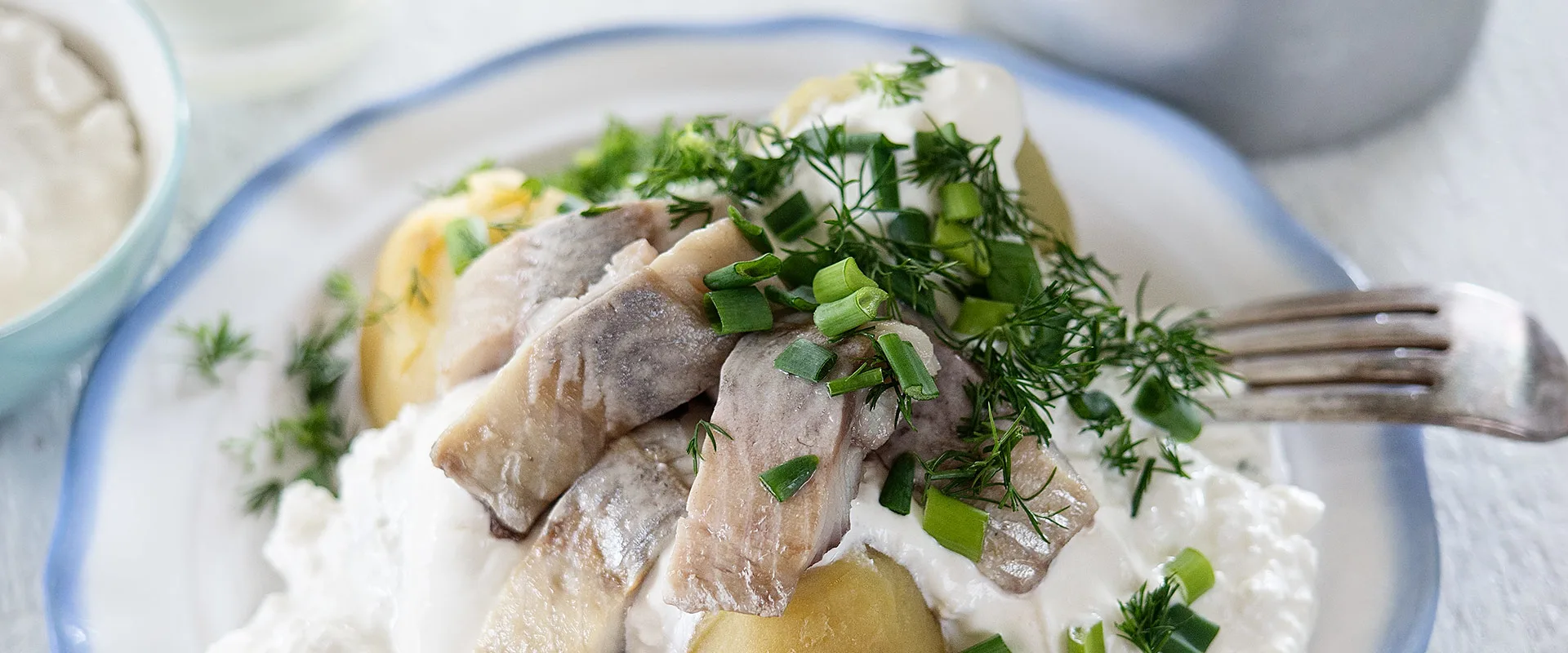
Found in Latvian restaurants across the country, although it’s always best at its freshest by the coast, the herring used in silke ar biezpienu un kartupeliem is marinated in brine to give it a stronger flavor. Once the herring has been fried, it’s served on a bed of cottage cheese and sour cream with a side of boiled potatoes, topped with spring onions
7. Kartupeli ar Gailenu Merci
The next Latvian traditional food to make our top 8 is something a little different. You won’t find kartupeli ar gailenu merci on menus anywhere else (unless you happen upon a Latvian restaurant, of course).
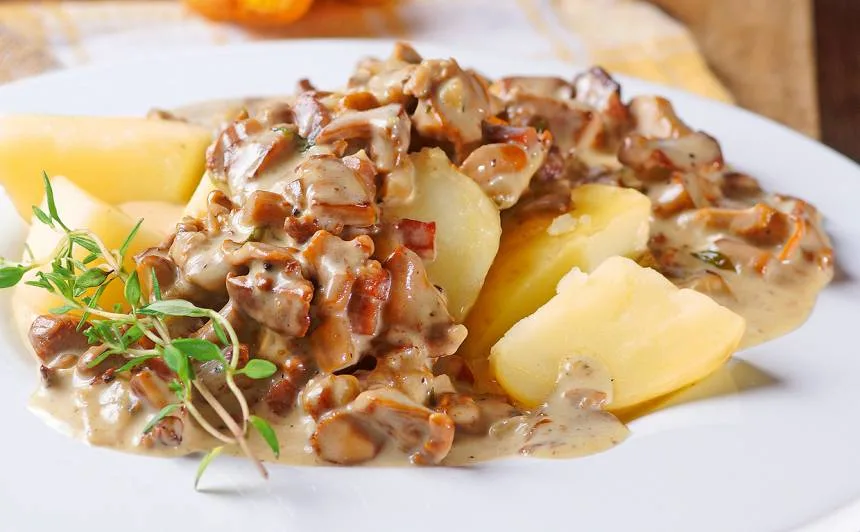
The boiled potatoes are back, but this time they’re in a divine chanterelle sauce. Chanterelle mushrooms, fried off with bacon and sour cream provide a delicious, smoky flavor. If seasons had a taste, kartupeli ar gailenu merci would be an autumnal walk through a Baltic forest.
8. Gotina
If Latvian ambrosia got you hankering for something sweet earlier, you’ll love the final Latvian traditional food to make our rundown. Last, but certainly not least, gotina is Latvia’s favorite candy. Affectionately known as “little cows”, these small, individually-wrapped soft candies are made from condensed milk.
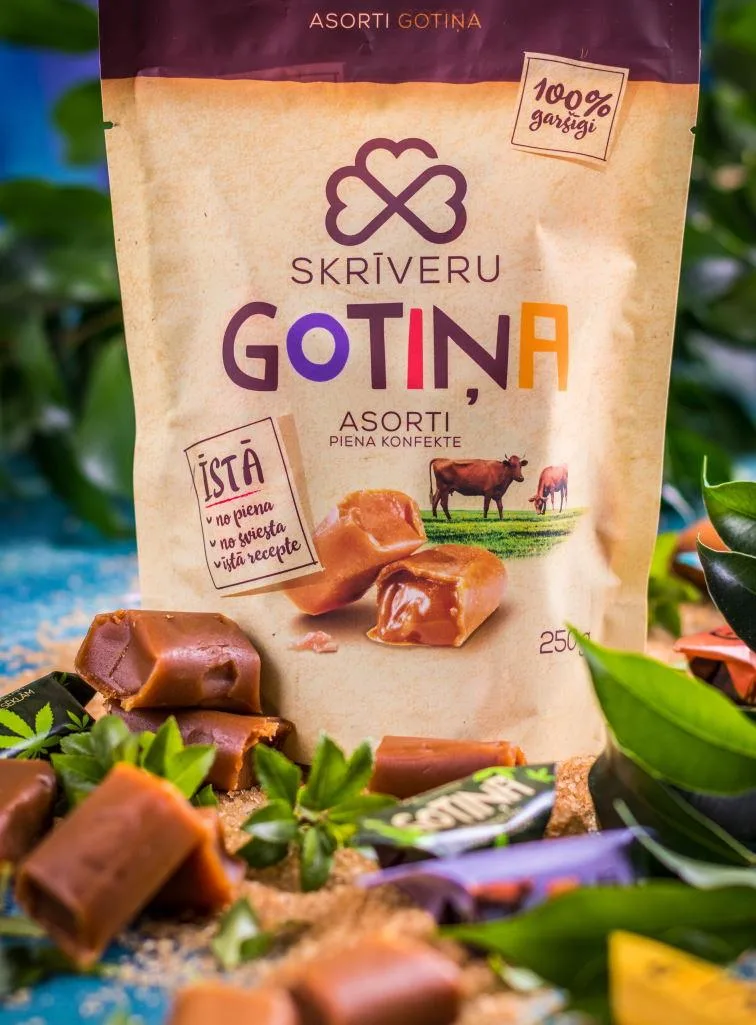
The original gotina are still the best seller, but like most candies, they’ve evolved over time. You can now get your hands on several different flavors, and, as ever, it would be rude not to try them all. Helpfully, you can buy them in packets of assorted flavors.
Nutty flavors like pistachio and hazelnut, plus fruity gotina with berries, plums and even lavender are all divine. For a true sugar hit, you’ll want to try salted caramel, or for something a little quirky, give black hemp-flavored gotina a try.
Share This Article

Traveling soon? Subscribe to The Insight below and get exclusive access to our personalized travel advice community via WhatsApp so you can ask all your burning travel questions.
Looking for the best comprehensive travel insurance? SafetyWing has you covered.
And for your eSIM in every country, there is only one option we recommend: Airalo.
Read more of our best insights from around the world


